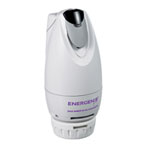Right. I'll try and explain this one as clearly as possible .
I'm a big geek. I love smart home products and own an Echo Dot and a Google Home Mini.
The next logical step is to install things like smart light switches around the house.
However, I have a concern with such devices.
Amazon Alexa devices communicate with Amazon's services .Google's Home devices communicate with Google's services. Both are *unlikely* to just disappear overnight and stop working .
However, if I buy 10 smart light switches from some unknown Chinese manufacturer, which most seem to be, and set them up, what are the chances of them stopping working if the company that made them goes out of business or stops providing the service?
What I don't understand is, when Google or Amazon assistants are set up to connect to a new device, be it a light bulb or a switch or plug socket, is it connecting directly to that device, or is it connecting to a third party service provided by the device manufacturer? If it is the former then great, there's no worry. If it's the latter your devices devices could stop working at any point .
Does anyone know the mechanics behind this?
Cheers .
I'm a big geek. I love smart home products and own an Echo Dot and a Google Home Mini.
The next logical step is to install things like smart light switches around the house.
However, I have a concern with such devices.
Amazon Alexa devices communicate with Amazon's services .Google's Home devices communicate with Google's services. Both are *unlikely* to just disappear overnight and stop working .
However, if I buy 10 smart light switches from some unknown Chinese manufacturer, which most seem to be, and set them up, what are the chances of them stopping working if the company that made them goes out of business or stops providing the service?
What I don't understand is, when Google or Amazon assistants are set up to connect to a new device, be it a light bulb or a switch or plug socket, is it connecting directly to that device, or is it connecting to a third party service provided by the device manufacturer? If it is the former then great, there's no worry. If it's the latter your devices devices could stop working at any point .
Does anyone know the mechanics behind this?
Cheers .



